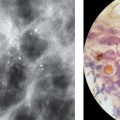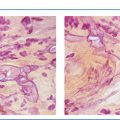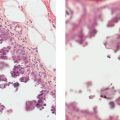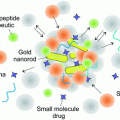Introduction
The treatment of breast cancer has changed dramatically over the last generation. Treatment has gone from surgery only to complex interactions with surgeons, radiation oncologists, medical oncologists, and others. New treatments become available almost weekly at a time when there is increasing pressure to maximize quality of life as well as the potential for cure while keeping close reigns on the cost of care. As population health directives become more important, the question of how to pick the right treatment at the right time for any given patient is tantamount. As we explore the field moving forward, the use of evidence-based choices becomes increasingly important. Although there are many “correct” choices to provide optimal care, it is also important that physicians deliver the best evidence-based care in a way that moves the field of cancer therapy forward. We strongly believe that the use of evidence-based pathways is the best way to insure this happens.
There is much written about cancer guidelines—a collection of treatment choices based on historical and concurrent clinical trials and years of experience. Although we believe individual practitioners should have sufficient latitude to choose therapy for any given patient, often these choices are not based on the best available care as determined by published evidence. As we address the ever-expanding cost to provide cancer care, we feel strongly that a standardized approach to the treatment of breast and other cancers will allow us to make the most progress.
With this concept in mind, we believe that pathways , prioritized evidence-based choices for cancer treatment, are a better approach to move the field forward. The problem with this concept is who makes the decision regarding what is the best pathway. As a healthcare system, when we started to address this issue, we felt there were critical guiding principles that needed to be followed:
- 1.
Appropriate clinical trials should always be the first recommended option.
- 2.
Pathways should be determined by practicing clinicians from both academic and community centers so that data could be reviewed by the doctors actually caring for the patients. This is preferable to pathways selected by insurance companies, which tend to prioritize the least expensive route rather than the best, evidence-based pathway.
- 3.
After a clinical trial option, pathways should be selected prioritizing efficacy of treatment, toxicity of treatment, and cost of care in determining the order of prioritization. Specifically if two or more treatments were equally effective, they should be ranked by the least toxic to the patient, and if equally effective, and equally toxic, they should be ranked by the lowest cost of care.
Unlike guidelines, such as National Comprehensive Cancer Network (NCCN) where multiple recommendations are listed for any given stage of disease, we felt it was most important to have recommendations prioritized so that we could collect and evaluate the data of a large number of similarly staged patients treated the same way. This has also allowed us to offer and accrue a large number of patients to clinical trials to help move the field forward. It has also allowed us to create a standardized precision medicine program to be sure that appropriate patients receive genomic testing of their tumor, and are recommended to receive the newest molecular therapy that is appropriate to their specific tumor mutations.
Oncologists in our group are encouraged to follow the recommended pathways, always offering their patients the ability to participate in clinical trials, and to be involved in the decision-making process. The physicians have the opportunity to deviate from the recommended pathway if they believe there are reasons why the recommended treatment is not the best for a given patient. For most diseases, between 85% and 92% of patients are treated on pathway.
In many years as a practicing surgical oncologist, I have found few words scarier to patients than “You have cancer.” In the United States, every year, 281,550 women and 2650 men are told they have breast cancer. The treatment options have expanded dramatically since 1894 when William Halsted told patients their only option for potential cure was a radical mastectomy. Treatment approaches for breast cancer have substantially moved from surgical approaches only to truly multidisciplinary care. Fortunately, surgical options are extensive including far less radical procedures. Radiation therapy has been highly refined, again giving patients numerous options for treatment. Now, with molecular testing of tumors, we have become much better at defining which patients will or will not benefit from chemotherapy or immunotherapy, and with recent discoveries, even patients with extensive metastatic disease can live many years after diagnosis.
When we evaluate where treatment is available, most patients prefer to receive their care close to home. With better-trained surgeons and surgical oncologists, availability of advanced radiation treatments in the community, and opportunities to participate in clinical trials, patients no longer need to travel to academic centers to receive truly state-of-the-art care.
With the many options that are available to patients, they can receive the right care at the right time in the right place—proximal to where they live. Applying methods of standardization utilizing evidence-based pathways, broad-based disease-specific conferences, and dissemination of appropriate information regarding the most innovative therapies, this care can be delivered across wide geographies allowing patients to receive their care closer to their families, home, and support structures. The questions frequently asked involve how to find such centers; what are the appropriate questions patients should be asking; and how can they get the best and most appropriate care to maximize their chance for cure, have the best quality of life, and, if not curable, live the longest, most comfortable survival.
This integration of care involves evaluation and treatment by a multidisciplinary team. Particularly with the use of “virtual telemedicine,” this type of evaluation can be performed even in remote areas where patients live. Accelerated treatment options for radiation therapy, greater use of outpatient surgery, and shortened chemotherapy cycles along with the increased use of some of the newer oral chemotherapy agents as well as hormonal and molecular treatments make innovative, evidence-based care available to almost all breast cancer patients.
Utilizing best-practice education and standardization of surgical techniques along with a significant quality program, operations performed need not be limited to surgeons doing the operation “the way I’ve always done this” at a time when studies have shown that newer, less deforming procedures provide comparable or improved chance for cure. Many new reconstructive techniques have been added to community centers as well. Radiation therapy for breast cancer in the past required a 7-week course for completion. With newer techniques, this can be reduced to <SPAN role=presentation tabIndex=0 id=MathJax-Element-1-Frame class=MathJax style="POSITION: relative" data-mathml='312′>312312
3 1 2
weeks to as little as 1 day for appropriately selected patients. Chemotherapy duration has been reduced from years to several months in most patients. With more recent availability of molecular therapy, it can be administered orally with less frequent visits to the physician’s office.
There is much confusion, particularly among patients, about how to determine the best treatment for their cancer. Although the internet provides an incredible amount of information, the wide range of sources makes it very hard for anyone, especially patients and their families, often under duress, to find and interpret what they are reading. Unfortunately, the most outlandish and unproven recommendations can be presented in a way that can give false hope and misinterpretation. In looking for accurate sources of information, patients frequently check the NCCN guidelines and get quite confused. NCCN is a consortium consisting of many of the National Cancer Institute Comprehensive Cancer Center teams. Although this represents a highly knowledgeable group, it tends to be made up of members from academic centers rather than oncologists practicing in the community, where most patients are actually treated. The NCCN guidelines are very thorough and generally include all treatment options that have been shown to have efficacy against a specific tumor type. This provides an excellent reference list, but because of the large collection of recommendations, it can be very confusing, even to clinicians, regarding which is the best treatment to choose and is particularly confusing to patients.
With the large number of patients seen in our system, we prefer to rely on pathways rather than guidelines. Introduction of evidence-based pathways has improved patient access to clinical trials but can also prioritize treatment based on the efficacy of drugs with the lowest toxicity and the lowest cost. In our system, pathways are selected by a national group of practicing academic and community oncologists who meet virtually on a quarterly basis. Additional meetings are held when game-changing new therapies are introduced for consideration of incorporation into pathways. This is possible while offering patients the best opportunity for cure when possible, and for long-term palliation focusing on quality of life when an individual patient does not have curable disease.
Guidelines (including NCCN), unlike pathways, provide physicians a wide range of “acceptable” treatments but generally do not prioritize the treatments in any order. Progress in medical oncology is made by comparing several treatments against “best available” but often take years and many thousands of patients to have the data to answer such questions. Particularly in a large system that sees thousands of new cancer patients each year, the use of pathways allows standardization, which improves care, reduces complications, but at the same time allows the flexibility to change treatments when new discoveries are made. This also provides better data to review and confirm efficacy of treatment and allows better quality controls. It also has the potential to save costs, particularly when very expensive therapies can be eliminated by more sophisticated molecular tests that can define their likely effectiveness.
It is our belief that oncology is a field that improves care and outcomes by continually seeking better, safer, less toxic, and hopefully less costly treatments. We strongly support clinical trials, as that is the best way to compare new treatments to the best available current care. This should continue until cancer is ultimately irradicated as a disease. We feel that standardization of “best” care is an obligation of a system such as ours. Pathways should not be looked at as “cookbook” medicine, but should offer oncologists a way to select evidence-based care while continuing to allow them the flexibility to choose alternative approaches when they feel this is appropriate based on the specific characteristics of any given patient. By prioritizing clinical trials, this allows patients the flexibility to participate in studies designed to improve the care for their disease and may enhance their prognosis. We consider it a sign of appropriate success that, depending on the individual cancer type and stage, the on-pathway rate for treatment runs between 85% and 92% across our system.
In addition to helping select a clinical trial or the best evidence-based care, the use of pathways helps standardize cost of care. The new molecular treatments, although potentially more effective and less toxic, are often outrageously expensive. By appropriately using molecular testing and careful evaluation of the evidence, as we have done though a sophisticated Precision Medicine program, we have found that these drugs are now selectively offered when we can suggest the highest likelihood that they will be effective. This also allows us to avoid expensive treatment that we feel will not be effective in any patient’s particular tumor.
Pathways allow us to standardize care offered to a large group of patents across a broad geography. Although we have not found that pathways themselves save large amounts of healthcare dollars, we have found that comparing treatment for patients treated on pathway versus those treated off-pathway has a smaller range of costs. With our high rate of compliance with pathways we can provide more predictable costs with less variation.
A further benefit of standardization and size has been our ability to leverage the knowledge and skills of our physicians and advanced practice clinicians (APC) to the benefit of our patients. Within medical oncology, all our physicians have selected two diseases of particular interest. We have also created system-wide disease-specific conferences where all new complex cases are presented to this large panel of physicians. In the case of breast cancer, the most common new cancer seen in the system, we have created five regional conferences in Wisconsin where new cases are presented for discussion. The advantage of this approach is that care is standardized across a wide geography, and even those practicing in our more remote locations can feel there is wide support for the care they are providing to their patients. Although oncologists in the smaller locations need to treat all patients with multiple diagnoses, they benefit from the expertise in the system, and more importantly, they also serve as valuable resources in the system. By selecting the diseases of interest, they agree to increase their continuing medical education in these areas, which helps provide focus at a time when new knowledge expands at an explosive rate. This subspecialization has also helped enhance engagement among our physician and APC teams. This has also allowed us to provide both in-person and virtual multidisciplinary disease-specific clinics. As an example, breast cancer patients can be evaluated by all appropriate specialists in one setting based around the patient, their family, and needs. Although this can be less convenient for the physicians, if done appropriately, it can be done in an efficient and timely manner. Patients and their families do not get overwhelmed, and they often can come to the clinic with a diagnosis and leave with a full plan as to their near-term care. This system also allows for appropriate evaluation by not only the breast surgeon, medical oncologist, and radiation oncologists but allows genetic counselors, plastic surgeons, dieticians, financial counselors, and other support professionals to create an all-encompassing care plan for the patient. A comprehensive program of disease-specific nurse navigators facilitates coordination of the many disciplines.
In 2007, 22.7% of patients diagnosed with breast cancer died from their disease while only 15.5% diagnosed in 2021 succumbed. Although this is remarkable progress, it shows that there is tremendous progress still to be made. Standardization of evaluation and treatment will allow continued reduction in patient mortality from breast cancer.
This book has been developed by authors who are highly experienced in working in multidisciplinary teams utilizing evidence-based pathways, and offers how these types of treatments can be prioritized and standardized to provide all patients with the right care, in the right place, at the right time.
References
Stay updated, free articles. Join our Telegram channel

Full access? Get Clinical Tree








